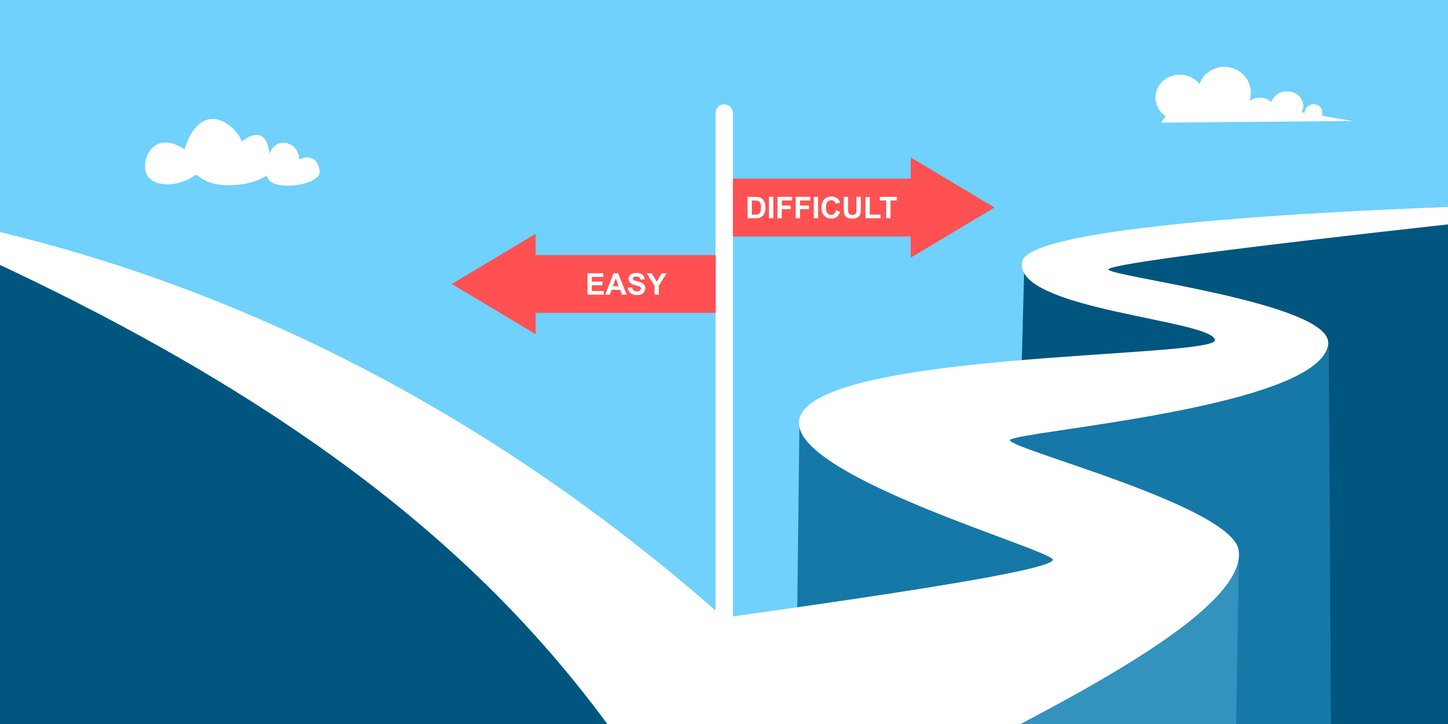Over the past couple of decades, I have had the privilege or reading a LOT of books and attending many seminars / workshops / retreats. Precious few have had the impact on my personal / professional trajectories as Scaling Up.
Several years ago, I engaged the services of a Certified Scaling Up Coach to evaluate my business. I was curious about just how we were really doing. By all indications, we were slaying it. We were highly profitable. We were growing at a strong pace. Little did I realize until I brought in a Certified Scaling Up Coach that while my business was doing well, it was not performing the way it could and should have been.
I found the Scaling Up process to be quite thorough. I especially appreciated that it was systematic and data-driven. Ultimately, I credit the Scaling Up Methodology with saving my business and dramatically reducing friction and unnecessary drama.
A Certified Scaling Up coach quickly guided my team and I through the process and illuminated that we were successful in spite of ourselves. Despite our seemingly solid year-after-year success and profitability, the Scaling Up Methodology helped shine light on became painfully obvious my company was not at all on the trajectory I had hoped. Our trajectory was off because we were not focused on getting the right people doing the right things right. Our strategy was not Blue Ocean. We had poor execution. And we were not appropriately managing cash.
Sound like your organization?
No one wants to hear this.
I was lucky. I needed to hear this. And as a consultant, I knew better, but I needed someone else to show me. The cobbler’s children have no shoes.
I had no one to blame. I was the problem and bottleneck. All problems start at the head.
Within 90 days of that trajectory intervention, several essential and extremely painful changes were made. The data screamed what to do. We had the Scaling Up Methodology. Honestly, I simply would not have made these hard decisions before that Scaling Up engagement. I did not have the data nor framework the Scaling Up process provided.
I have never looked back. I was so impressed with my Scaling Up success that I began introducing aspects of Scaling Up to my Clients. The results have been incredible.
Here are some common questions I get asked during consults and my answers.
What are the greatest challenges leaders face when they first decide to Scale Up?
The greatest challenge leaders face when they first decide to Scale Up is:
- Their own mindset (interested or committed).
- The mindset of their team and organization (interested or committed).
- The fear that we were breaking the business.
Scaling Up is a process and mindset that works for those who are brave and bold enough to begin the journey and trust in the process. This journey will involve difficult changes and choices. There will be unpopular changes and obvious decisions that leaders should have made long ago. The key is to begin and stick to the Scaling Up process.
The mindset of the leader, especially the CEO, truly must be…
- Accountable. If you are the CEO, Director, head honcho, the buck stops right at your feet. Everything that happens, and I mean EVERYTHING, is your fault. Success or failure is very much on you. Embrace this reality.
- Aligned with their People, Team, and Organization.
- Committed to getting the Right People Doing The Right Things Right.
If there is a lack of personal accountability, a crack in the alignment, the Scaling Up change journey will be in jeopardy. And that is unacceptable.
Hard decisions will be required. People must enroll in the vision and be held accountable for embodying that vision and standards. Everyone must row hard and true. Those who choose not to row must be inspired and motivated to get onboard or helped to find alternative career opportunities that better align with their future.
Trajectory. Chances are you have heard or referred to the term “trajectory” applied to a person, team, and organization.
“Don’t be afraid to give up the good to go for the great.” - John D. Rockefeller
Think of the high school or college classmate who seemed confident and driven. It was obvious that they would be successful regardless of what they did professionally. Years later, their confidence and drive lead to expected success. That is trajectory.
Remember the first time you tried Netflix’s DVD by mail program? I do. I almost immediately stopped renting from Blockbuster and paying late fees. Netflix is thriving while Blockbuster is no more. Did you know that Blockbuster had the opportunity to buy Netflix for pennies on the dollar but could not see the future that Netflix did? Trajectory.
Perhaps you recall when Apple’s board fired Steve Jobs on September 16, 1985? Perhaps you remember what happened after Jobs’ departure. Apple’s trajectory change was immediate. Then, after Apple’s stock price dropped to a 12-year low with bankruptcy looming, Jobs rejoined Apple on September 16, 1997. Steve Jobs saved Apple. Again: trajectory.
Where does a person or business’ trajectory come from? I believe trajectory is shaped by many factors, including the ingrained habits of thought of their people, the ability to shape and embrace change, exploiting industry, market, and economic conditions, and of course, the execution of quality decisions. Trajectory is also shaped by the collective intersection of passion, purpose, and profit.
I find the ultimate trajectory shaper to be the collective mindset of playing to win or playing-not-to-lose coupled with the adoption of the Blue Ocean Strategy. People, teams, and companies who play-to-win iteratively improve through fast feedback loops (like Netflix). Those who play-not-to-lose identify a “winning strategy” and cling to it with everything they have (like Blockbuster Video). And I would much rather swim in a differentiated “blue ocean” than an intensely-competitive one filled with blood.
Crisis or Existential Threat. There are countless examples of people, teams, and organizations riding their tired strategy into the dirt because they could not or would not adapt or adopt a different strategy. And the fault for the dirt ride lies at the top—the CEO—you. Remember, all problems start at the head. Is how you think the bottleneck for your company?
As a consultant, I have observed the vision declaration by the CEO and then observed helplessly as precious few in the organization executed that vision. And in some cases, I have observed influential “team members” publicly refuse to embrace the necessary trajectory change and then watched in bewilderment (with everyone else) as the CEO acquiesced and allowed the essentially insubordinate influential team member to remain on the “bus” unscathed.
When the CEO chooses not to set the tone and hold people accountable, the result is more of the same.
The water is effectively poisoned for the rest of the team and organization. This is how a CEO sentences their trajectory to mediocrity, or worse yet—this is why good people leave.
If you are short on commitment—doing whatever it takes to succeed, it is best to do nothing. If you are committed, do what Hernan Cortez did in 1519 when he landed in the New World with six hundred men. He ordered his men to “burn the boats.” By burning the boats, Cortez hoped to galvanize and motivate his men. His men knew they had to fight to survive.
What are your boats?
While nothing beats a genuine crisis or existential threat to make the dramatic changes needed to improve your business, the Scaling Up methodology makes the choices more palatable and obvious.
Look. You can shape your destiny or wait for a crisis or circumstances to do it for you.
Remember: Interested people do what is convenient. Committed people do whatever it takes.
You and your people must be committed. Otherwise, you and your people will not be successful. Remember. People do not like to change or be changed, and unless they face a crisis or existential threat, they will often remain steadfastly dedicated to the status quo. Use Scaling Up to create the obvious need and momentum necessary to enhance your trajectory.
2. What are some of the biggest pitfalls you see when a company begins to Scale Up?
I see the following pitfalls.
The Uncommitted CEO: Remember. Interested people do what is convenient; committed people do whatever it takes. An interested CEO is unlikely to be committed to results—particularly if they allow mediocre performance in their people and execution. This lack of commitment by the CEO holds the team and company back from what is possible. Accordingly—the team and company follow precisely what the CEO does in lockstep. Whatever the CEO is interested in or committed to, so shall the team and company.
Scaling a business requires making very difficult decisions at times that are essentially the proverbial "fork in the road". Chances are, not every team member, Customer, or Vendor will make it through to the other side of the Scaling Up process.
There can be no sacred cows.
The Executive Team is Not Healthy and Aligned: This habit is the first position on the Rockefeller Habits Checklist™ for a reason. Nothing happens without a healthy, aligned Executive Team. Period.
All problems start at the head. The foundation will be weak if the Executive Team is not healthy and aligned. Execution will be hit or miss. Unnecessary and costly drama will ensue—the “who” will matter more than the “what.”
Ensuring the Executive Team is healthy and aligned is not a once-a-year endeavor. It is an ongoing work in progress. Otherwise, mediocrity and rot WILL set in.
“Not finance. Not strategy. Not technology. It is teamwork that remains the ultimate competitive advantage, both because it is so powerful and so rare.” - Patrick Lencioni
Failing to Fully Adopt and Trust the Scaling Up Process: The Scaling Up process has been refined over the past 15 years with hundreds of consultants and thousands of companies implementing and fine-tuning. The Scaling Up methodology is based on some of the greatest past and current minds in business.
Misaligned Loyalty: I have been privileged to build companies from scratch. These are some of my best professional memories—fighting the good fight with fellow team members—pulling all-nighters—doing whatever it took. The people involved become family, and this becomes an initial foundation that so many companies are built upon.
And while this loyalty is often invaluable early in a company, cracks in the foundation will appear as it scales. These are often “people cracks” where the background and experience required to scale properly are simply not there, putting the company at a competitive disadvantage relative to others in the industry. To make matters worse, the tales of the good fights and all-nighters abound. A sense of honor and loyalty naturally permeates as those who built the company’s foundation are respected.
Unfortunately, those that built the company come to hinder its growth. This is why loyalty must be aligned not with one another but the mission, vision, and values. Loyalty must be aligned with the Company, Customer, and Shareholders.
The competition never sleeps and is seeking to take away your lunch.
“A friendship founded on business is better than a business founded on friendship.” - John D. Rockefeller
Romantic notions aside, if you do not insist upon and model loyalty to the mission, vision, and values of the Company, you risk imperiling everything and everyone.
This loyalty to the company’s mission, vision, and absolutely requires:
- The best people in the right seats on the “bus” doing the right things right.
- A performance culture mindset; a willingness to do whatever it takes, and playing-to-win as a team.
- A proper focus on the Four Decisions - People, Strategy, Execution, and Cash.
3. Give it to me straight: what’s the good, the bad, and the ugly about the concepts in Scaling Up?
Scaling a business is not easy. Scaling a business requires discipline, the ability to make hard decisions, and a mindset of continuous-improvement. It requires humility because the ego is incredibly expensive.
The ugly truth is few are willing to do whatever it takes to scale. Most are committed to sloppy systems and execution, hiring people from the gut and making things up as they go. Most do not want to be held accountable to a performance standard. The Great Resignation is upon us with people making demands.
Choosing between a valued team member—a colleague who becomes a friend, almost like family— and a better future for the company can be painful. But, there can be no sacred people, nor sacred cows.
As mentioned, it often takes a crisis or an existential threat for people to commit to doing whatever it takes to make the changes necessary to Scale Up. Or it takes a leader willing to “burn the boats” by being willing to lose what may be viewed as a critical team member or two or three—abandon a dominant “winning” strategy—and tighten up execution and accountability.
Consider the People Decision—focusing on getting the right people doing the right things right with clear accountabilities and metrics (KPIs) requires following a process with accountabilities. Few are willing to do what it takes to do this right because it involves seemingly giving up control. Take Human Resources for example. HR is one area of a business where egos loom large. Few people are willing to check their egos and instead, the people decision is biased and often wrong. And egos protect the status quo.
4. How long does it take to incorporate Scaling Up into an organization?
Simply put: two to three years is normal.
…and quite frankly, you never quite arrive. There is always something to work on.
5. How do I get started implementing Scaling Up at my company?
Even simpler: contact me today. Read Scaling Up by Verne Harnish.
“I do not think that there is any other quality so essential to. success of any kind as the quality of perseverance. It overcomes almost everything, even nature.” - John D Rockefeller
Interested people do what is convenient. Committed people do whatever it takes. If you are ready to embark on a journey you know you must begin, we are here to help guide you.
Download and complete the Rockefeller Habits Checklist™.
Chris Young is a Trusted Advisor To Founders / CEOs | Certified Scaling Up Coach | Builder of People, Leaders, Teams & Economic Moats | Strategist and proud founder of The Rainmaker Group.




